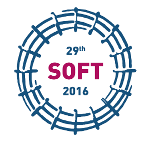Speaker
Yi-Hyun Park
(TBM Technology Team)
Description
Lithium-containing ceramics (Li-ceramics) are considering as tritium breeding material in pebble-bed form for solid-type breeding blanket in fusion reactor. The tritium breeding material requires small particle size to reduce diffusion distance of generated tritium in the intercrystalline. In addition, the essential resource, especially enriched Li-6, has to recover from the used tritium breeding material. For the hands-on operation during the recovery process, activation level of the used breeder is strictly limited in order to reduce impurities of the long-lived radioactive nuclides in the tritium breeding material. This study aims at the fabrication of Li2TiO3 pebbles, which have a small particle size and low levels of the long-lived radioactive nuclides, by using solid-state reaction process.
Lithium oxide (Li2O) and titanium dioxide (TiO2) were used as starting materials in the synthesis of Li2TiO3 powder. First, the starting materials mixed by wet ball-mill process. The mixed powder synthesized by heat treatment. The crystalline structures of the synthesized powders were identified by X-ray diffraction (XRD) method. The elemental concentration of the synthesized powder was analyzed to investigate impurities by inductively coupled plasma-optical emission spectroscopy (ICP-OES). Scanning electron microscopy (SEM) was used to observe the size and shape of the synthesized powders. The average particle size of synthesized Li2TiO3 powder was approximately 150 nm. And, the long-lived radioactive nuclides, such as Aluminum (Al) and Cobalt (Co), were not flowed into the synthesized Li2TiO3 powder. The Li2TiO3 pebbles were fabricated by slurry droplet wetting method using the synthesized Li2TiO3 nano-powder. The characteristics of fabricated Li2TiO3 pebbles, especially particle size, impurities, crush load, are introduced in this study.
Co-authors
Kyung-Mi Min
(TBM Technology Team, National Fusion Research Institute, Daejeon, South Korea)
Mu-Young Ahn
(TBM Technology Team, National Fusion Research Institute, Daejeon, South Korea)
Seungyon Cho
(TBM Technology Team, National Fusion Research Institute, Daejeon, South Korea)
Yi-Hyun Park
(TBM Technology Team, National Fusion Research Institute, Daejeon, South Korea)
Youngmin Lee
(TBM Technology Team, National Fusion Research Institute, Daejeon, South Korea)

